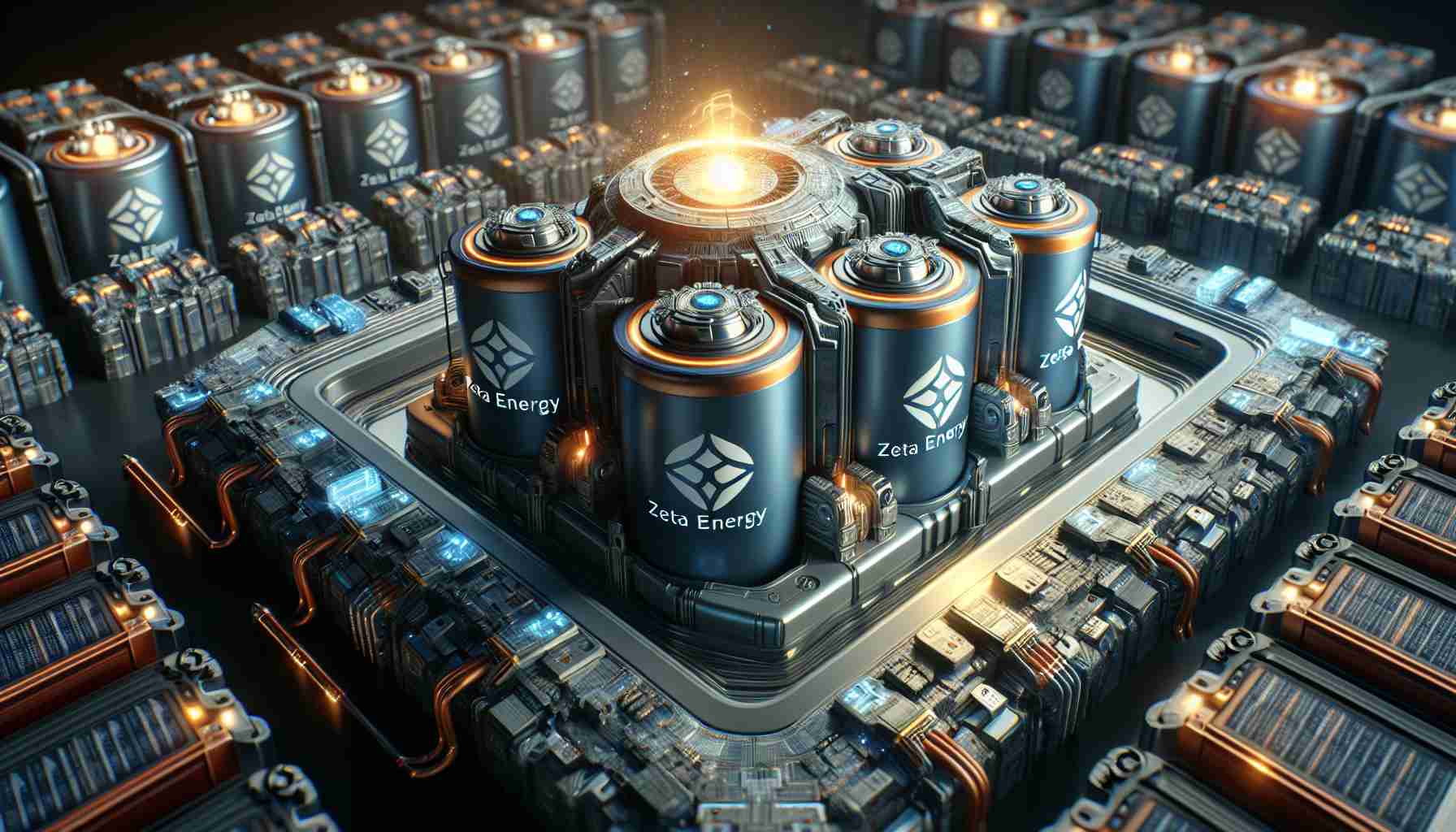Zeta Energy Corp. has been awarded a $4 million grant from the Vehicle Technologies Office (VTO) of the US Department of Energy to develop and commercialize their high-capacity lithium-sulfur battery technology. The VTO program aims to accelerate the development of innovative, sustainable, and clean mobility solutions that increase the range of electric vehicles (EVs) and address supply chain challenges for EV batteries. One specific goal of the program is the advancement of long-life and high-energy-density lithium-sulfur batteries.
Zeta Energy has developed sulfur-carbon composite materials that utilize the high energy density of sulfur while eliminating the “polysulfide shuttle effect.” Sulfur has long been of interest to battery manufacturers due to its theoretical energy density, which is significantly higher than traditional materials used in lithium-ion batteries. Additionally, sulfur is inexpensive and widely available, unlike many other materials typically used in battery supply chains. Zeta Energy’s lithium-sulfur batteries do not contain cobalt, manganese, nickel, or graphite and can be entirely produced using domestic materials. They also have a significantly lower CO2 footprint compared to other batteries and are less prone to thermal runaway.
Despite the advantages of lithium-sulfur batteries, previous attempts to commercialize them have been hindered by the “polysulfide shuttle effect,” which caused sulfur leakage into the electrolyte and rapid degradation of battery performance. Zeta Energy’s sulfur-carbon technology effectively immobilizes sulfur during battery operation, eliminating the polysulfide shuttle effect and enabling the batteries to achieve over a thousand charge-discharge cycles. While Zeta Energy also possesses a patented 3D-structured metallic anode that further enhances battery efficiency, lifespan, and cost-effectiveness, the project will focus on demonstrating the application of Zeta Energy’s sulfur-based cathode with a wide range of already available anodes.
According to Tom Pilette, CEO of Zeta Energy, “We are honored and grateful for the opportunity to collaborate with the Department of Energy on this project aimed at improving the performance of EV batteries. The time for lithium-sulfur technology is now—it will revolutionize battery efficiency, weight, cost, and sustainability for batteries and products that utilize these batteries. This project will allow us to demonstrate how lithium-sulfur batteries can transform the EV industry and increase the competitiveness of the American manufacturing sector.”
About Zeta Energy
Zeta Energy is a private US-based company specializing in the development and commercialization of high-performance, safe, and environmentally friendly rechargeable batteries with lower production costs. Zeta Energy’s batteries eliminate the use of critical materials such as graphite, cobalt, manganese, and nickel. The company holds an extensive patent portfolio that includes over sixty patents and patent applications. Zeta has received prestigious awards for its patented carbon nanotube anodes and sulfur cathodes, including awards from ARPA-E and the World Materials Forum. The company occasionally releases public updates and events on its website http://www.ZetaEnergy.com and social media accounts:
LinkedIn: www.linkedin.com/company/zetaenergyX (formerly known as Twitter): www.twitter.com/ZetaEnergy
Source: Zeta Energy
FAQ Section based on key topics and information presented in the article:
1. What is the grant received by Zeta Energy Corp. from the Vehicle Technologies Office of the US Department of Energy?
– Zeta Energy Corp. has been awarded a $4 million grant as part of the VTO program, aimed at developing and commercializing high-capacity lithium-sulfur battery technology.
2. What are the goals of the VTO program?
– The VTO program aims to accelerate the development of innovative, sustainable, and clean mobility solutions to increase the range of electric vehicles (EVs) and address challenges in the EV battery supply chain, such as improving battery performance, durability, and cost-effectiveness.
3. What are the advantages of Zeta Energy’s lithium-sulfur batteries?
– Zeta Energy’s lithium-sulfur batteries have a high capacity, do not contain critical materials such as cobalt, manganese, nickel, or graphite, can be entirely produced using domestic materials, have a lower CO2 footprint compared to other batteries, and are less prone to thermal runaway.
4. How does Zeta Energy’s sulfur-carbon technology eliminate the “polysulfide shuttle effect”?
– Zeta Energy’s sulfur-carbon technology effectively immobilizes sulfur during battery operation, eliminating the polysulfide shuttle effect. As a result, batteries based on this technology can achieve over a thousand charge-discharge cycles.
5. What are Zeta Energy’s plans for this project?
– Zeta Energy intends to demonstrate the application of their sulfur-based cathode with a wide range of already available anodes, contributing to the improvement of EV battery performance, durability, and cost-effectiveness.
6. What awards has Zeta Energy received?
– Zeta Energy has received prestigious awards for their patented carbon nanotube anodes and sulfur cathodes, including awards from ARPA-E and the World Materials Forum.
7. Where can more information about Zeta Energy be found?
– More information about Zeta Energy can be found on their website: Zeta Energy and on their LinkedIn and Twitter profiles.
Key term definitions or jargon used in the article:
– VTO: Vehicle Technologies Office of the US Department of Energy
– EV: electric vehicles
– Energy density: the amount of energy stored in a given material or system
– Electrolyte: a substance that conducts electric current in a battery
– Cathode: the electrode through which electric current enters the battery
– Anode: the electrode through which electric current exits the battery
– Durability: the ability to maintain its properties over an extended period
– Cost-effectiveness: the ratio of costs to benefits or efficiency
– CO2 footprint: the amount of carbon dioxide (CO2) emissions generated throughout the lifecycle of a product or process
Suggested relevant links to the main domain (not subpages):
– Zeta Energy’s website: Zeta Energy
The source of the article is from the blog macnifico.pt
